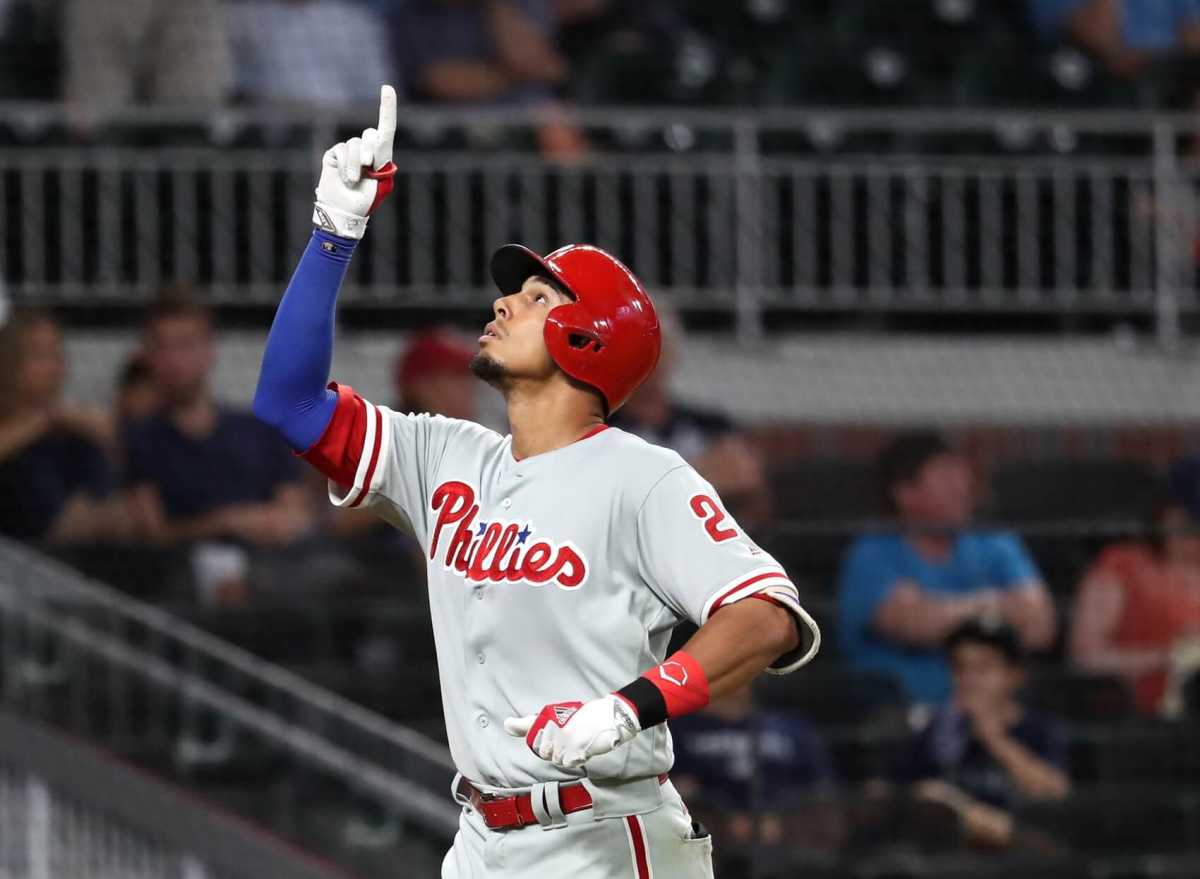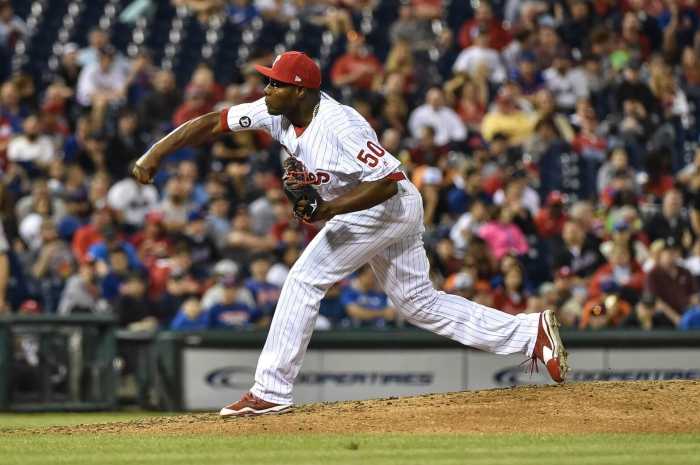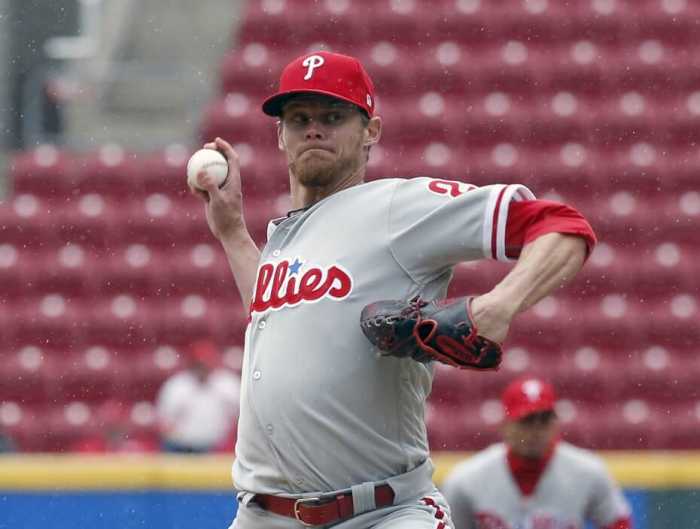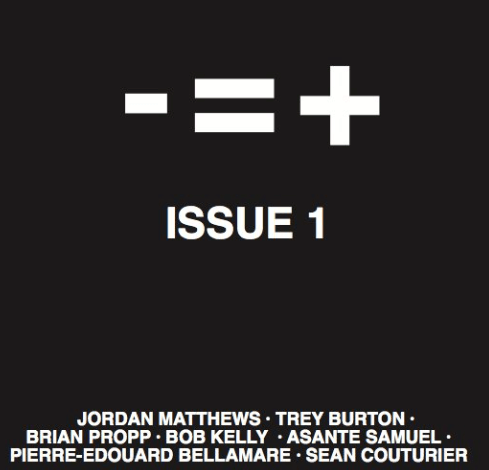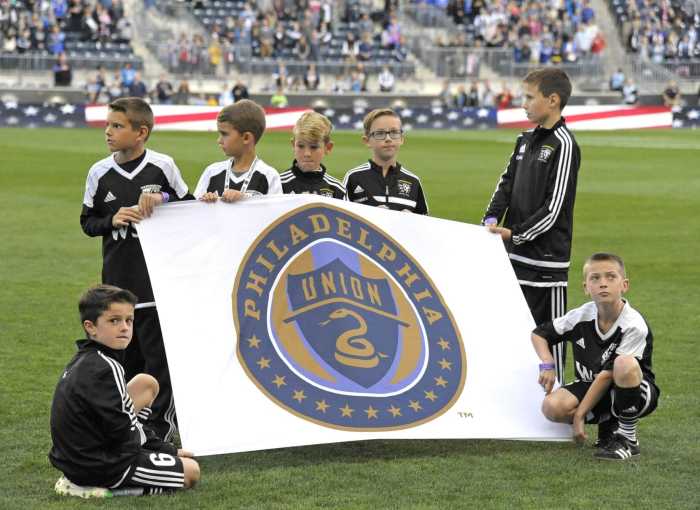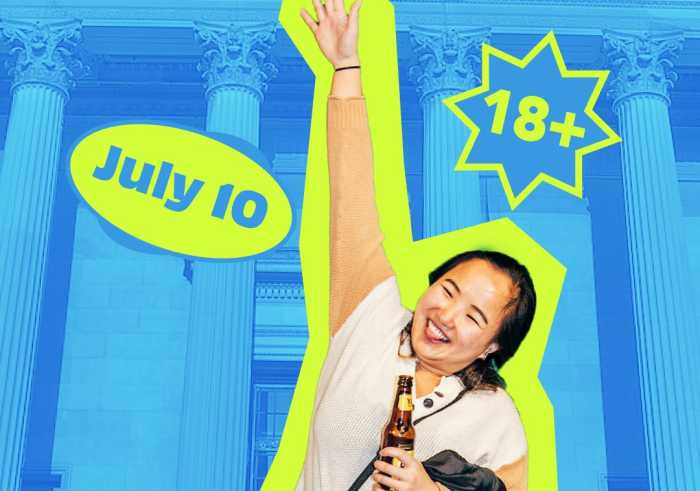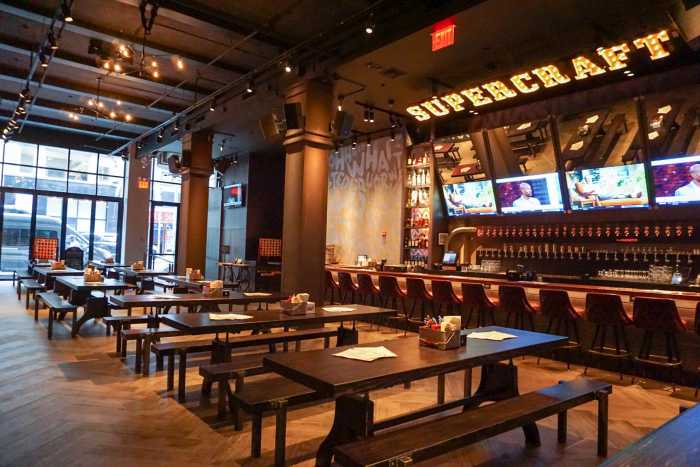Before we begin today, I want to throw a disclaimer out that I understand that it’s only June 9. With that being said, let’s talk the All Star Game. This year’s All Star festivities will be in Miami from July 9-11, culminating with the 88th All MLB All Star Game on Tuesday.
While we don’t know exactly who the participant will be representing the Phillies this year, we do likely know that it will be a singular contestant. If that is the case, it’ll mark the fourth season in a row that has happened. It’ll also likely be a fourth different player. That’s what happens when you’re a bad team. You get almost an empathy entrant because the league has mandated that each team must have at least one representative.
With that being said, let’s first take a look at who the Phillies representative might be this year, and then we’ll compare them to other All Stars from Phillies teams that only sent one player to midsummer classic.
I think at first thought, the name that jumps out to most Phillies fans immediately this year is Aaron Altherr. Since taking over as a starting outfielder capable of playing all three outfield positions, and effectively relegating Michael Saunders to a $9 million bench guy, Altherr seems to be an obvious choice. Despite playing less games than most of the regulars, Altherr ranks among the top four in just about every statistical category, including runs, hits, doubles, homeruns, RBI’s, walks, batting average, on base percentage and the advanced metric WAR, or wins above replacement. Basically, Altherr has been the best offensive player on the squad this year. I would think it’ll likely be Altherr taking the trip to Miami for his first All Star selection.
Another option may be Cesar Hernandez. One of the better defensive players on the team for the last few years, Hernandez has really worked on his offensive approach and become a productive hitter. He leads the team in runs, hits and stolen bases. He’s second in that WAR category, behind Altherr. Hernandez could force the hand of Joe Maddon. If he decides on a Phillies offensive player, it’ll come down to one of those two. (Side bar, it’s very unlikely a Phillie will be voted in by the fans this years. No positional player is in the top five at their respected position in voting this year.)
One final option, and the player who I personally believe should be the Phillies All Star, is newly christened closer Pat Neshek. I thought bringing in Neshek was a fantastic move for the Phillies this offseason, and it’s paid dividends so far. Through 24 appearances, and 22 innings pitched, Neshek has held opposing hitters to a .171 batting average all while holding down a 0.82 ERA. I know it’s a small sample size, but those numbers, paired with his staggering 8.59 strikeout to walk ratio and his 0.77 WHIP make Neshek my choice to represent the Phillies in this year’s All Star Game (If I had a vote for reserves, which, unfortunately, I don’t.)
I think, likely, Maddon will go offense, though, and for that, we’ll assume that he’ll choose Altherr. So now let’s compare Aaron Altherr’s season to the seasons of other lone representatives the Phillies have had in recent years.
We have a near mirror comparison to start things off, as last year’s representative was outfielder Odubel Herrera. Prior to the All Star break, Herrera was also in the top four on the team in runs, hits, homeruns, RBI’s, walks, batting average and on base percentage. The only category Altherr has a leg up on Herrera is doubles. This means the pair were almost identical through the first half of the season. Herrera had more hits, but he also had more plate appearances by this time last year. Altherr is so similarly comparible to Herrera that it would make too much sense for him to be the Phillies’ All Star this year.
The year prior was Jonathan Papelbon, and while you can’t compare a hitter and pitcher adequately, I’ll try my best. Prior to his selection, Papelbon picked up 14 saves on a very bad Phillies team. He held down a 1.60 ERA, striking out 35 batters in less than 34 innings. He also had a sub-1.00 WHIP. Like I said, you can’t truly compare apples and oranges, so these stats are essentially comparable more to Neshek than Altherr.
In 2014, the Phillies sent Chase Utley to the All Star Game. Utley was hitting nearly .300 for the Phillies through the first half of the season. He led the team in runs, hits and doubles, and was in the top four in triples, homeruns, RBI’s, walks, batting average, on base percentage and slugging percentage. Now, these numbers may seem comparable to Altherr and Hererra but I personally weigh them a little more for two reasons. One, Utley was much older than the aforementioned pair. Two, I think Utley’s offense around him was worse. He had a declined Ryan Howard, an old Marlon Byrd, a… well just a John Mayberry Jr., but you get the point. He had less to work with in 2014 than Herrera or Altherr have had the last two seasons.
Prior to the last four years, the last time the Phillies had a sole representative was 2003, when they sent Randy Wolf. They also only had one from 1996-1998 and again in 2000 and 2001. In 1996, it was then closer Ricky Botallico. In 1997 and again in 1998 it was starting pitcher Curt Schilling. In 2000, the team was represented by catcher Mike Lieberthal. 2001 saw Jimmy Rollins go for the first time. This spans my lifetime, but there have 23 other times the Phillies only sent one player.
So the question becomes, where does Altherr (again, stipulating here) rank among these lone reps. In the earlier breakdowns, I would rank him ahead of Herrera, but behind Papelbon and Utley. Let’s take a quick look at the others I just mentioned and compile a ranking list.
Randy Wolf threw the third inning of the 2003 All Star Game and surrendered a run. Prior to that, he was 10-4 with a 3.31 ERA on the season. He finished the season just 16-10, having a rough second half where his ERA rose to over 4.20, but it was a solid first half for the lefty.
2001 was Jimmy Rollins’ first full season in the big leagues. All he did was finish third in rookie of the year voting, swipe 46 bags, lead the league in at bats and triples and hit a very respectable .274. He walked in his only plate appearance in the All Star Game that year. It was the first of three he would play in. Want to know the craziest stat for Rollins’ All Star Games? In 2007, when he won the MVP, he didn’t even make the team.
Mike Lieberthal went the year before that. In 78 games prior to the break, Lieby hit .301 with 13 home runs and 56 RBI’s. He also had a solid 27 doubles. The second half was far less kind to the catcher, who hit just .201 in 30 games in the second half. The final season numbers look productive at .278, 15 homeruns and 71 RBI’s, but they’re not telling of a tale of two halves.
Curt Schilling went back to back years in 1997 and 1998.
In 1997, Schilling was 9-8 headed into the All Star break with a 3.59 ERA. He struck out 159 in 133 innings pitched, though. He pitched two scoreless innings in the All Star Game that year, striking out Alex Rodriguez and Ken Griffey Jr. back to back. The second half was much kinder to Schilling, who went 8-3 down the stretch with a 2.30 ERA in 121 innings pitched to finish the season with a very impressive 17-11 record and sub-3.oo ERA. He would finish fourth in Cy Young voting that year.
He was back the next season after posting just an 8-8 record, but holding down a 2.92 ERA in 19 starts. He picked up seven of his 15 complete games in the first half and struck out 180 batters in 145 innings. Schilling didn’t pitch in the 1998 All Star Game. It was an opposite season to the one prior for Schilling, as he struggled more in the second half of ’98, going just 7-6. His ERA was still respectable at 3.64, but was a far cry from his first half success.
Finally, in 1996, the Phillies were represented by Ricky Botallico. Botallico appeared in 37 games that first half, picking 20 saves. He pitched to a tune of a 3.61 ERA over 42.1 innings. Over that span, he struck out 49 hitters. His WHIP was pretty high, though, sitting at over 1.1, as he walked 19 in that span and gave up 29 hits. Botallico pitched a scoreless fifth inning in the All Star Game that year, striking out Pudge Rodriguez.
Now that that is out of the way, let’s make this list. I’m only going to compare first half numbers for this one. I’m also going to give Altherr a projection bump to forecast a full half of play to level the playing field. So here it goes.
10. Randy Wolf, 2003
9. Odubel Herrera, 2016
8.Ricky Botallico, 1996
7.Jonathan Papelbon, 2015
6. Aaron Altherr, 2017
5. Jimmy Rollins, 2001
4. Curt Schilling, 1997
3. Chase Utley, 2014
2. Mike Lieberthal, 2000
1. Curt Schilling, 1998
So there you have it. My list of Phillies one representative seasons. Again, we don’t know who will get the call this year, but I’m assuming it’ll be Altherr unless he has a miserable June.
Mandatory Credit: Jason Getz-USA TODAY Sports

